At the end of February I donated blood for the first time in a couple of years. I arrived home with a bandage on my arm and a heart-shaped sticker on my shirt, both of which prompted questions from my kids and led to a simple explanation of “I donated blood today” from me.
While my four-year-old focused her attention on the color of my bandage and whether or not she could have my sticker, my six-year-old, Will, expressed deep concern for my health. He wondered aloud how I was still alive; how could I be standing in the kitchen and cooking dinner when just hours before someone at the Red Cross removed all of the blood from my body?
Oops. Perhaps I owed Will a slightly more in-depth explanation of “donating blood”.
I started talking about pints and blood capacity and plasma, and before I knew it, I was measuring out 10 pints of water, dyeing the water red, simulating a car accident, and building a “Red Cross testing facility” out of Legos. It’s entirely possible I got carried away, but when my demonstration came to an end, I felt pretty good about Will’s comprehensive understanding of the blood donation process.
Here’s how it went down.
First, to help Will understand how much blood I’d donated, I showed him what one pint of water looked like. I quickly realized, however, that one pint wouldn’t mean much to Will unless I placed it in the context of the approximately 10 pints of blood we have in our bodies; he and I decided that the 10 pints of blood in our bodies would be represented by 10 pints of water in a bowl.
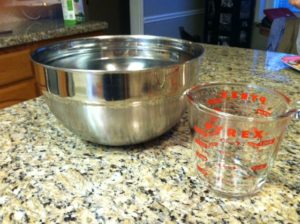
“It doesn’t look like blood, Mama”, Will commented, which prompted me to pull out my food coloring and liven up my lesson.
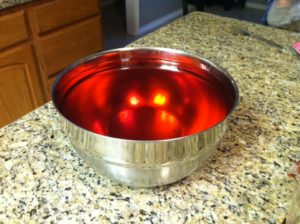
Once the water was red, I showed Will that even when a pint was removed from the bowl, the bowl was still very full. I assured him that even though a pint of blood had been removed from my body, my body was still very full of blood. Whew.
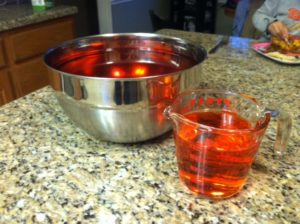
Then Will wanted to know why I’d donated blood in the first place, and where the blood went once the “Red Cross people” took it out of me. This is the point at which I got carried away: while Will watched, puzzled, from his stool at the kitchen counter, I gathered and set up into a small “scene” a variety of strange items.
This first bowl, with the photo of me in front of it, represents me and my blood. The second bowl, with the Matchbox car in front of it, represents a person who was just in a car accident and their blood. My bowl was MUCH fuller than the car accident victim’s bowl because the car accident victim had lost quite a bit of blood. (At this point my four-year-old chimed in with, “I bet he wasn’t wearing his bike helmet!” Good call, kiddo, but that’s another lesson for another time.)
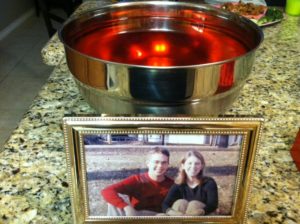
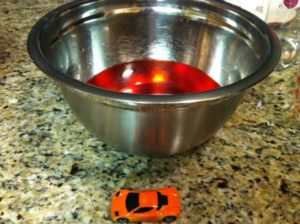
I scooped a pint of water out of my bowl and set the pint down behind the small, Lego-made Red Cross testing facility while we discussed what took place inside.
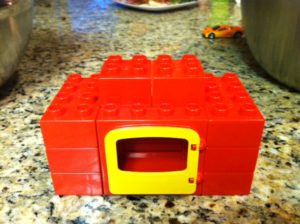
Once testing was complete, I poured the pint into the car accident victim’s bowl, which though not at all full, looked fuller than it had prior to my donation. I explained that while the car accident victim would need more water/blood to fill up his bowl/body, the rest of the blood he needed would have to come from other donors because we couldn’t empty my bowl any further.
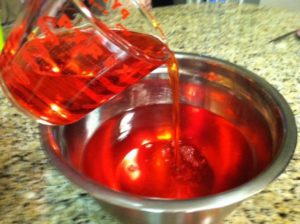
When we finished, Will could recite back to me the process, and his only question was why hadn’t I built a testing facility big enough to house my measuring cup. Because THAT would have been going overboard, son.
